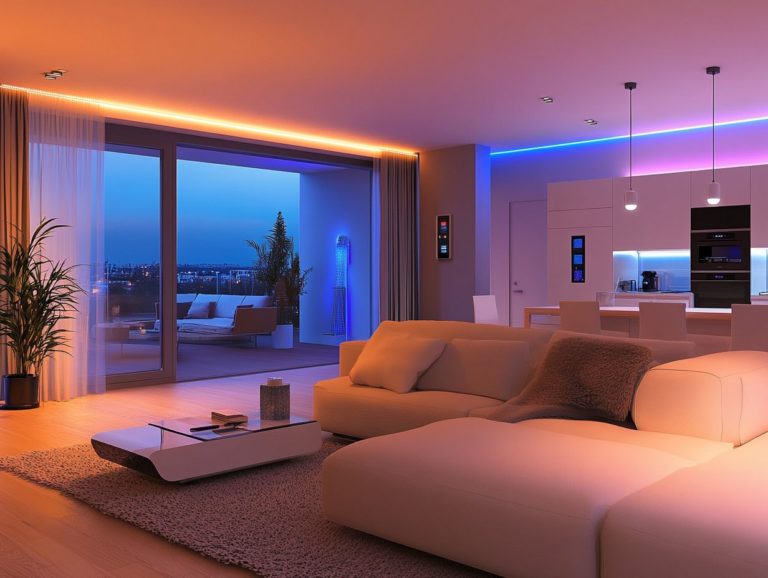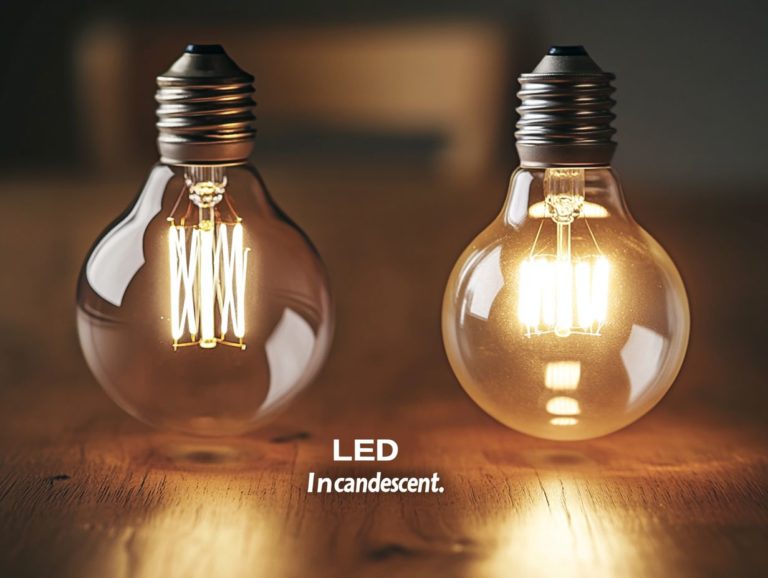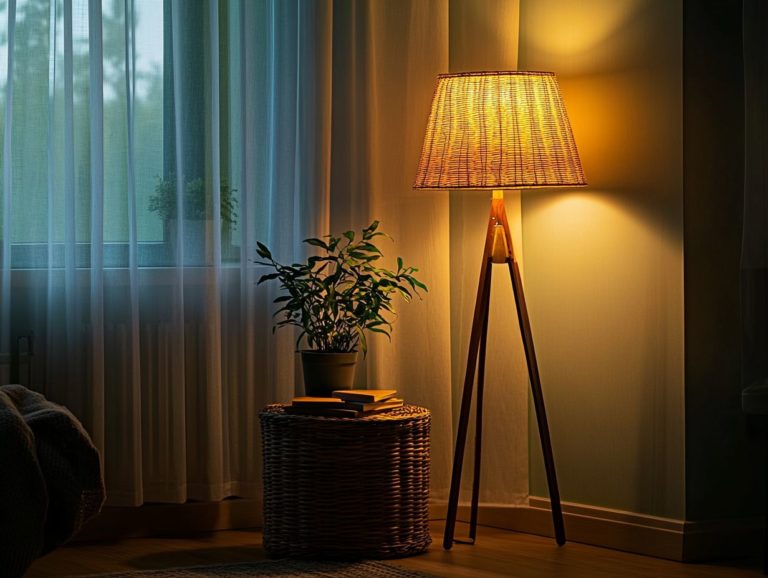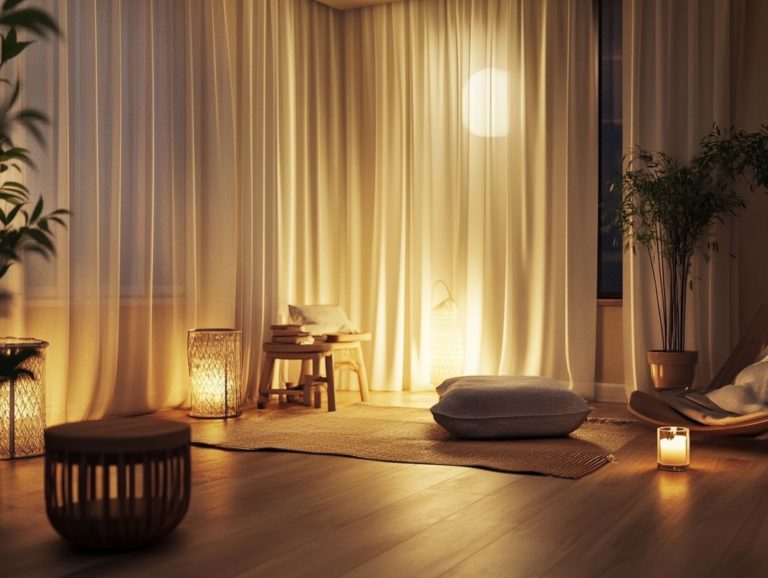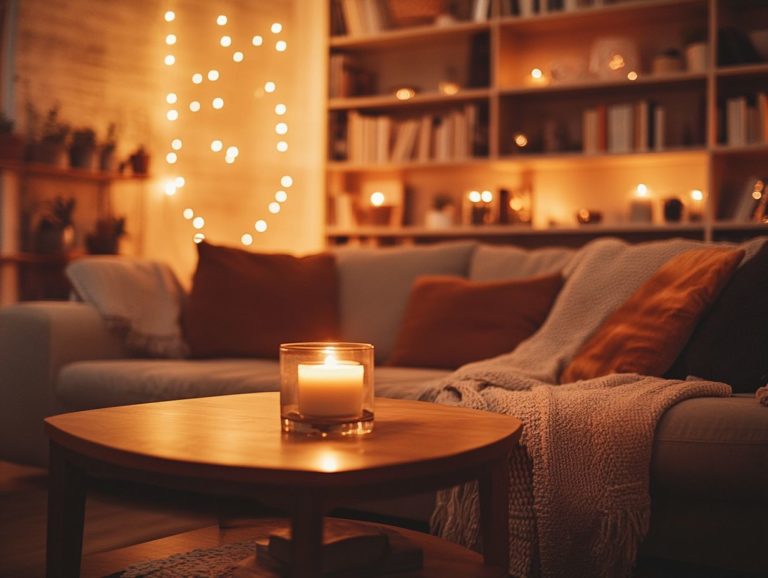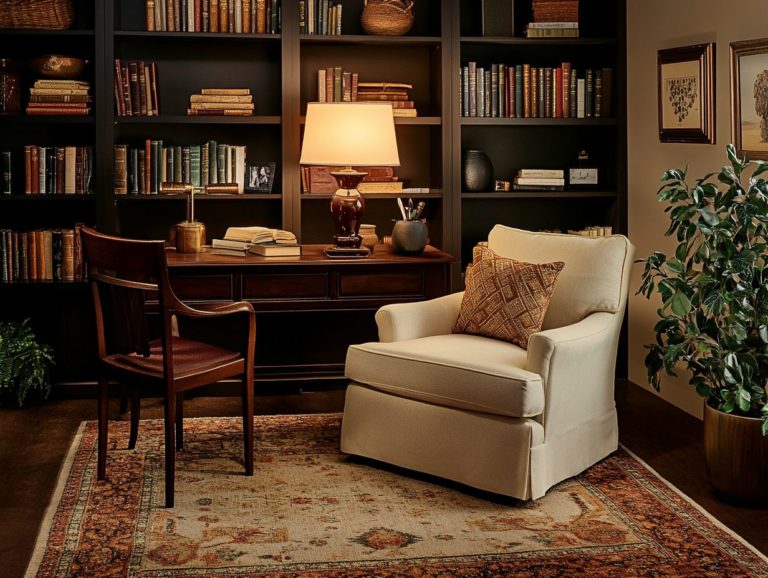“Top 5 Energy-Efficient Lighting Options for Homes”
Looking to enhance your home s ambiance while keeping those energy bills in check? You ve come to the perfect spot. Get ready to brighten your home sustainably!
This article delves into the top five energy-efficient lighting options that can transform your space and help you save money. From the sleek efficiency of LED light bulbs to the inviting warmth of halogen incandescents, you’ll discover the benefits of each type.
Plus, you ll find expert tips on how to incorporate natural light and energy-saving fixtures into your home.
Contents
- Key Takeaways:
- 1. LED Light Bulbs
- 2. Compact Fluorescent Lamps (CFLs)
- 3. Halogen Incandescent Bulbs
- 4. Energy-Saving Light Fixtures
- 5. Natural Light Sources
- How Much Can You Save by Switching to Energy-Efficient Lighting?
- What Are the Different Types of LED Bulbs Available?
- What Are the Benefits of Using Energy-Saving Light Bulbs?
- How Do Halogen Incandescent Bulbs Compare to Traditional Incandescent Bulbs?
- What Are Some Energy-Saving Light Fixtures to Consider?
- How Can Natural Light Sources Be Incorporated into Home Lighting?
- What Are Some Common Misconceptions About Energy-Efficient Lighting?
- Frequently Asked Questions
- What are the top 5 energy-efficient lighting options for homes?
- How do LED bulbs compare to traditional incandescent bulbs in terms of energy efficiency?
- What are the benefits of using CFL bulbs in homes?
- Can halogen incandescent bulbs be considered energy-efficient?
- Are linear fluorescent tubes suitable for all areas of the home?
- What should I consider when choosing energy-efficient lighting options for my home?
Key Takeaways:
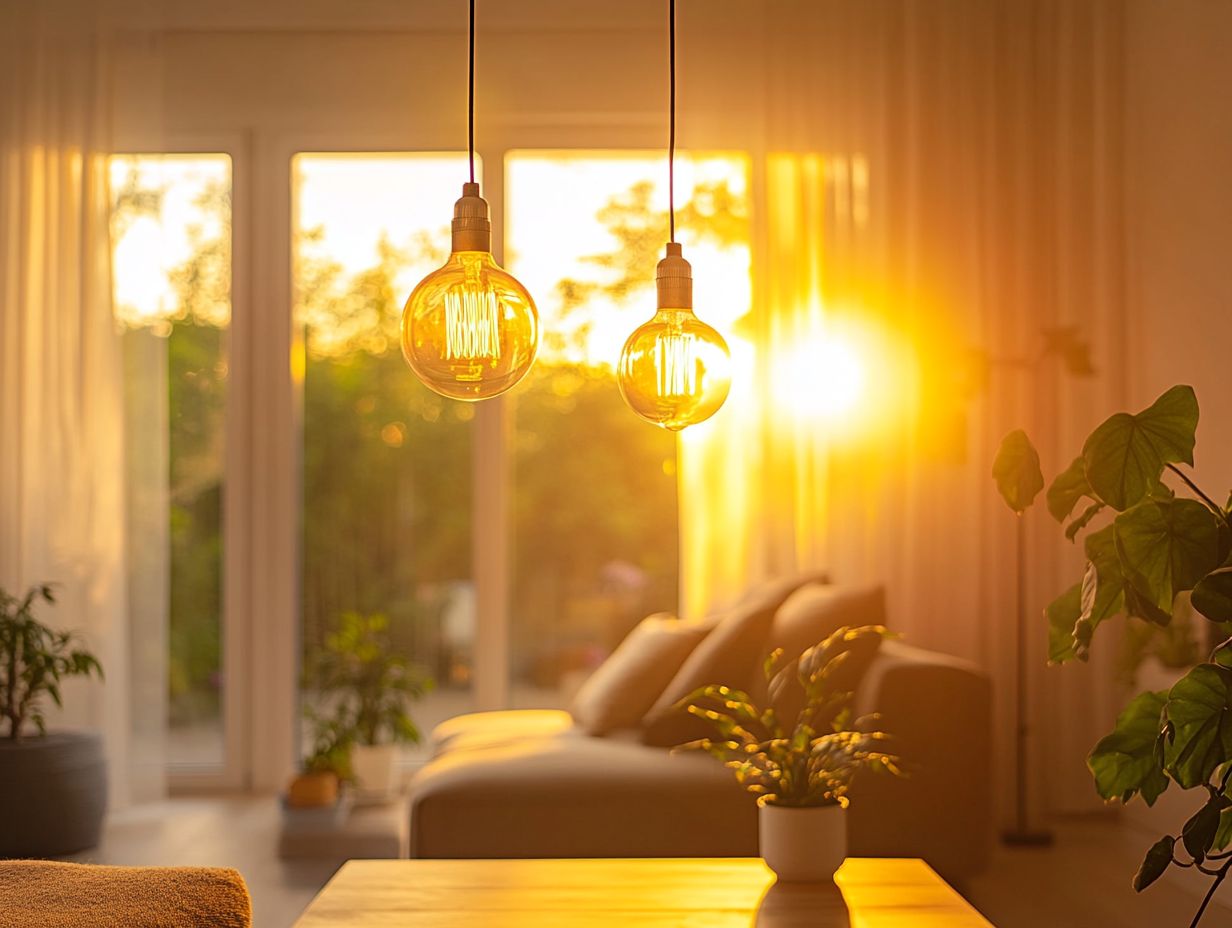
- Switching to LED light bulbs can save you up to 75% on energy costs compared to traditional incandescent bulbs.
- CFLs are a cost-effective alternative to LED bulbs, with similar energy savings and a longer lifespan than incandescent bulbs.
- Halogen incandescent bulbs are a slightly more energy-efficient option than traditional incandescent bulbs, but still use more energy than LED or CFL bulbs.
1. LED Light Bulbs
LED light bulbs are changing how homes and businesses are lit. They offer energy-efficient alternatives that not only reduce your electricity bills but also significantly lower your carbon footprint.
These cutting-edge lighting solutions consume dramatically less energy, often using up to 80% less wattage than their incandescent counterparts. This translates into substantial savings for you over time.
For instance, while a standard incandescent bulb might produce around 800 lumens at 60 watts, an LED achieves the same brightness at just 10 watts. This extraordinary efficiency not only reduces your monthly bills but also eases the strain on power plants, contributing to a healthier environment.
LEDs are free of harmful chemicals, unlike some fluorescent options, further solidifying their status as a sustainable choice for eco-conscious consumers like yourself.
2. Compact Fluorescent Lamps (CFLs)
Compact Fluorescent Lamps (CFLs) are an excellent choice for those seeking energy-efficient lighting solutions. They can significantly cut down on energy consumption and lower your electricity bills while boasting an impressive lifespan.
However, it s important to be aware of concerns regarding mercury toxicity and environmental impact. By using up to 75% less energy than traditional incandescent bulbs, CFLs help you save on utility costs and reduce the demand for electricity.
This reduction lessens the carbon footprint linked to energy production. With a lifespan that can be up to 10 times longer than conventional bulbs, these lamps minimize the frequency of replacements, which means less waste ending up in landfills.
Keep in mind that the presence of mercury requires careful disposal; improper handling can lead to environmental hazards. Fortunately, many communities offer recycling programs specifically for CFLs, ensuring that toxic elements are managed safely and reinforcing your commitment to sustainable practices.
3. Halogen Incandescent Bulbs
Halogen incandescent bulbs offer a modern twist on traditional lighting. They enhance energy efficiency compared to standard incandescent bulbs while delivering exceptional light quality and brightness that can transform the ambiance of any space.
Their capacity for producing a more intense and brighter light not only improves visibility but also brings colors to life, making them an excellent choice for a variety of environments, from your cozy home to bustling commercial settings.
In terms of energy consumption, halogen lamps are efficient, using less electricity, which translates into lower electricity bills over time and a positive contribution to a greener planet.
With a lifespan significantly longer than that of traditional bulbs, these lights also help minimize waste, making them a wise choice for those eager to reduce their environmental footprint while enjoying top-notch lighting performance.
4. Energy-Saving Light Fixtures
Energy-saving light fixtures are vital for modern households and commercial spaces. They offer innovative solutions that seamlessly incorporate smart technology like motion sensors and geo-fencing, a technology that allows you to set up virtual boundaries. This enables you to control brightness and reduce energy consumption while embracing eco-friendly practices.
These fixtures come in many styles, including LED downlights, smart bulbs, and outdoor floodlights with timers. By utilizing motion sensors, the lights spring to life only when someone enters the room. This eliminates waste and maximizes efficiency. Timed lights elevate energy management even further, allowing you to set precise on/off schedules tailored to your daily routine.
These features not only lead to noticeable reductions in electricity bills but also positively impact your carbon footprint. It s a win-win for your budget and the environment!
5. Natural Light Sources
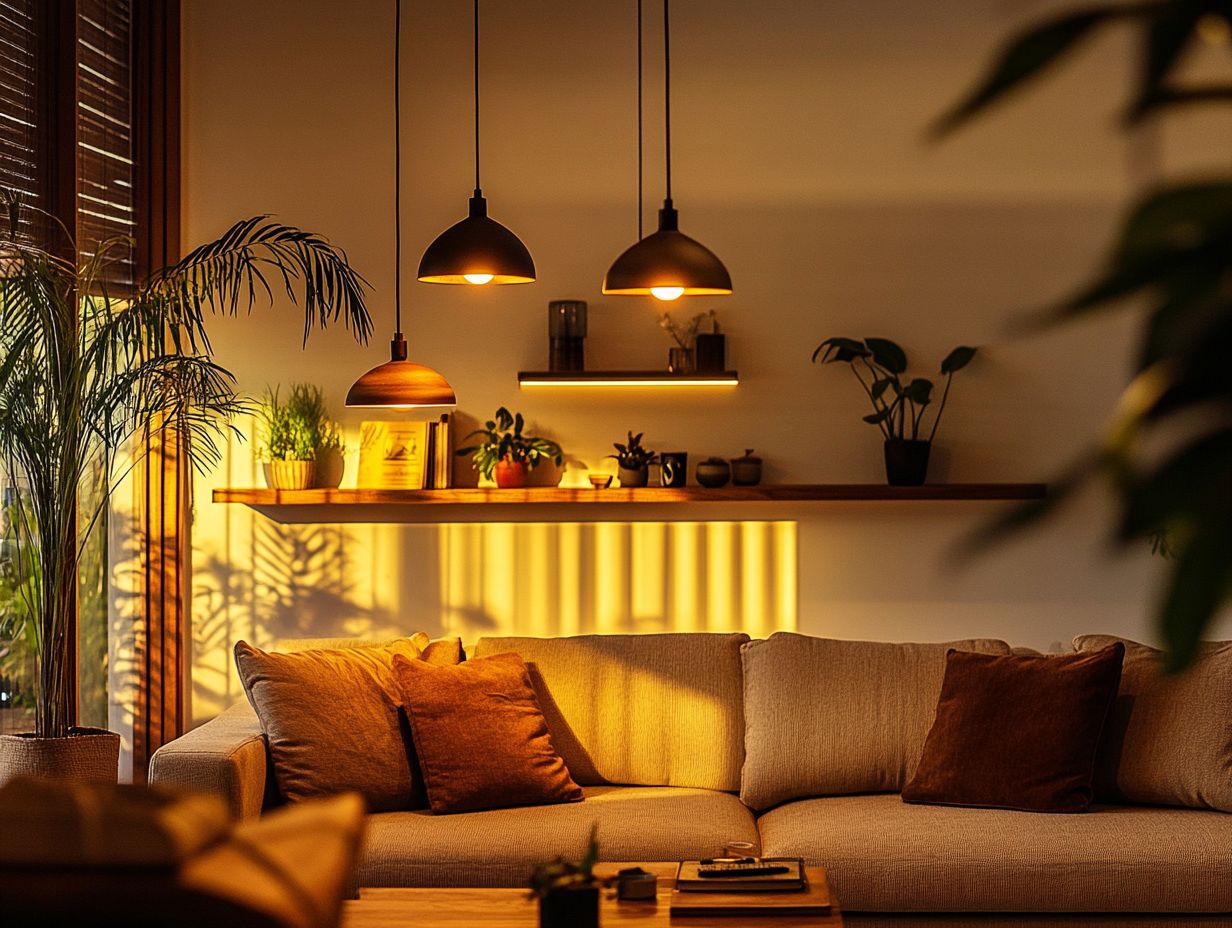
Incorporating natural light into your home lighting designs elevates the aesthetic charm of your spaces. It dramatically enhances energy efficiency and sustainability by cutting down on overall energy consumption and reliance on artificial lighting.
This thoughtful approach creates a warm feel that can positively influence your mood and productivity. Both businesses and homeowners are increasingly recognizing the myriad benefits of letting sunlight stream through strategically placed windows and skylights.
To truly harness this natural illumination, careful window placement is essential. This ensures every room basks in sunlight throughout the day.
Opting for light-colored interiors can further reflect and distribute sunlight, resulting in brighter living and working environments. By embracing these design principles, you can enjoy lower energy bills, enhanced well-being, and a deeper connection to the outdoors!
How Much Can You Save by Switching to Energy-Efficient Lighting?
Switching to energy-efficient lighting can lead to substantial savings on your electricity bills, potentially reducing energy consumption by up to 75%! Not only will this lower your costs, but it will also help minimize your carbon footprint, contributing to a more sustainable future.
For example, if you replace incandescent bulbs with LEDs, you could save around $100 per year on energy costs. In a case study involving a small business, the transition to compact fluorescent lamps (CFLs) resulted in savings exceeding $2,000 over five years, thanks to reduced energy usage and the extended lifespan of the bulbs.
Investing in these lighting options not only cuts immediate expenses but also significantly lowers maintenance costs. These bulbs often last ten times longer than conventional options. As you adopt these energy-efficient practices, you’ll enjoy tangible economic benefits while helping to foster an environment that promotes greater energy sustainability and responsible consumption.
What Are the Different Types of LED Bulbs Available?
You ll find a rich variety of LED bulbs on the market! Each is crafted to meet different lighting needs while maximizing energy efficiency. With multiple options in wattage and lumens, there s something for every smart lighting solution and specific application.
Standard LED bulbs excel in providing general illumination, while dimmable versions let you tailor the brightness to suit your mood or activity perfect for cozy evenings or tasks that require bright focus.
If you’re looking for something more advanced, smart LED bulbs elevate the experience with app-controlled settings and seamless compatibility with home automation systems.
When choosing the right wattage and lumens, consider the purpose of your lighting environment. A workspace, for instance, might demand a higher lumen output for optimal visibility, while a bedroom would benefit from softer light levels to foster a relaxing atmosphere. Ultimately, making the right choice enhances both functionality and ambiance in your space.
Switching to these fixtures can save you money and help the planet! This is your chance to save big!
What Are the Benefits of Using Energy-Saving Light Bulbs?
Using energy-saving light bulbs, such as Compact Fluorescent Lamps (CFLs), brings a host of benefits. You ll enjoy reduced energy consumption, substantial cost savings over time, and a lower carbon footprint. This makes them an environmentally responsible lighting choice.
These lightweight, efficient bulbs can last up to ten times longer than traditional incandescent bulbs. This means you ll spend less time replacing them and generating waste. Their ability to use about 70% less electricity allows you to minimize your utility bills, paving the way for a more sustainable energy usage approach.
By choosing CFLs, you re not just conserving energy; you re also contributing to environmental initiatives, like reducing greenhouse gas emissions. The versatility of CFLs makes them perfect for various settings, from the cozy ambiance of your home to the professionalism of a workspace. Choosing CFLs is a smart move that helps you shine bright while being eco-friendly!
How Do Halogen Incandescent Bulbs Compare to Traditional Incandescent Bulbs?
Halogen incandescent bulbs are a sophisticated upgrade from traditional incandescent bulbs. They offer enhanced energy efficiency and superior brightness while maintaining exceptional light quality.
When comparing the two, it s important to note that halogen bulbs typically consume about 20% less energy than their traditional counterparts. This makes them a more environmentally friendly option for your home or business. With an average lifespan of around 2,000 hours, halogen bulbs outlast standard incandescent bulbs, which last about 1,000 hours. This translates to fewer replacements and less waste.
Halogen bulbs emit a brighter, whiter light that enriches colors and details in any setting. However, they do produce more heat, which might raise safety concerns in certain environments. It s wise to consider the initial investment; halogen options often come with a higher price tag but can lead to significant cost savings over time.
What Are Some Energy-Saving Light Fixtures to Consider?
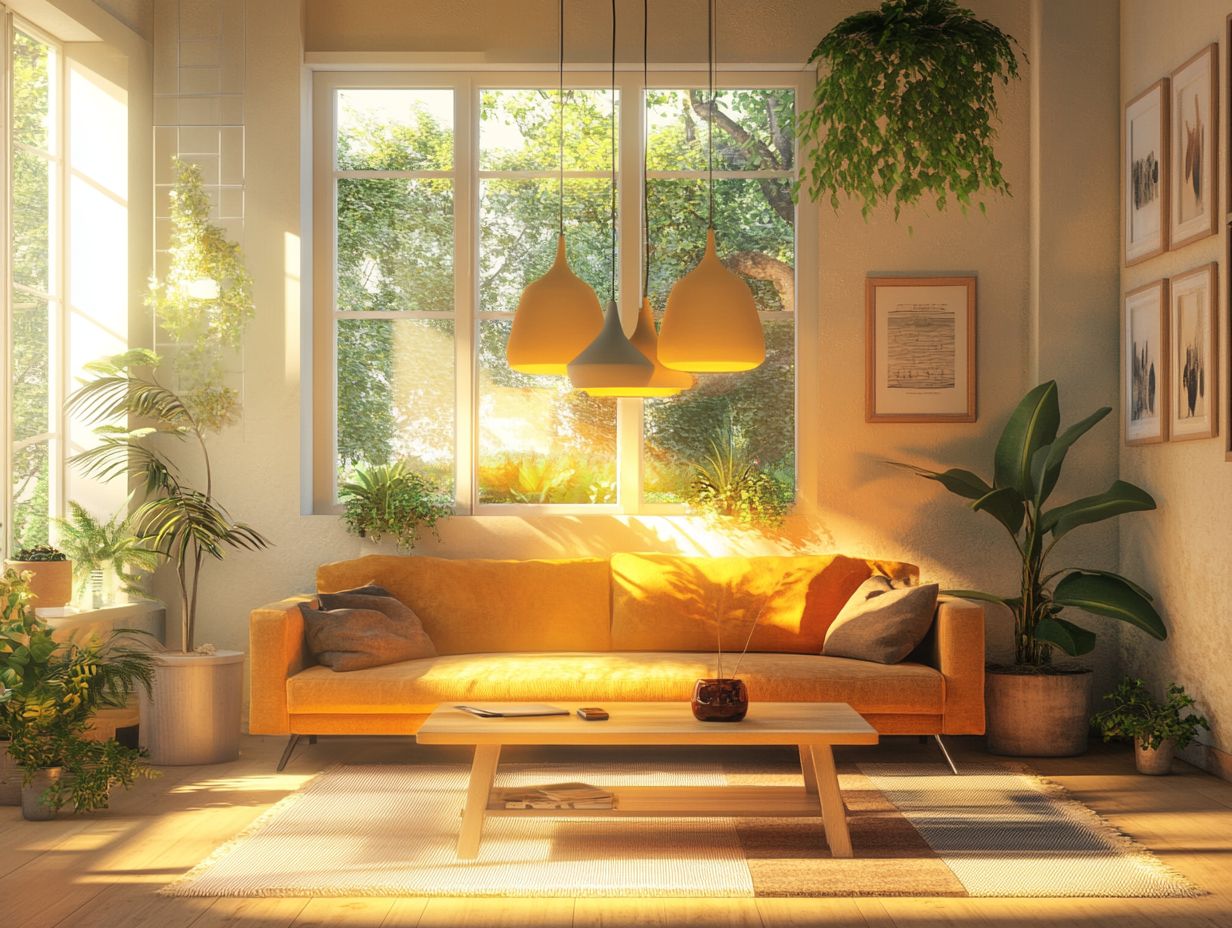
When you re exploring energy-saving light fixtures, options like LED recessed lights, smart lighting systems, and energy-efficient pendant lights can substantially reduce energy consumption while elevating the ambiance of your space.
These fixtures not only help lower your electricity bills but also enhance the visual appeal of any room. For example, LED recessed lights provide a sleek, modern aesthetic that blends seamlessly with various ceiling types, offering a minimalist charm.
Smart lighting systems let you customize brightness levels and color temperatures, affecting how warm or cool the light appears, perfectly matching different moods and occasions. Meanwhile, energy-efficient pendant lights bring sophistication to your dining areas or kitchens, available in styles that harmonize with both contemporary and traditional designs, creating an inviting atmosphere throughout your home.
How Can Natural Light Sources Be Incorporated into Home Lighting?
Incorporating natural light sources into your home lighting not only cuts energy consumption but also cultivates a warm, inviting environment that nurtures your well-being and comfort.
By strategically placing windows to capture sunlight during the day, you can significantly elevate the ambiance of your living spaces. Adding skylights invites additional light from above, creating an expansive and airy feel in your rooms.
Utilizing reflective surfaces, such as mirrors or light-colored walls, helps bounce light around, boosting overall brightness without extra electricity costs. These intentional design choices enhance energy efficiency by reducing reliance on artificial lighting and create a more uplifting atmosphere, ultimately improving your mood and productivity in everyday life.
What Are Some Common Misconceptions About Energy-Efficient Lighting?
You might have heard some misconceptions about energy-efficient lighting. These doubts can prevent you from switching to more sustainable options.
Many think LED and CFL (Compact Fluorescent Lamp) lights can’t match the brightness of incandescent bulbs. In reality, technology has improved, making energy-efficient options comparable or even superior.
These bulbs last thousands of hours longer than traditional ones. This longevity means fewer replacements and bigger savings on your electricity bills.
Understanding these facts helps you make informed lighting choices. You can embrace efficiency without sacrificing quality.
Frequently Asked Questions
What are the top 5 energy-efficient lighting options for homes?
- LED bulbs
- CFL bulbs
- Halogen incandescent bulbs
- Linear fluorescent tubes
- Compact fluorescent lamps (CFLs)
How do LED bulbs compare to traditional incandescent bulbs in terms of energy efficiency?
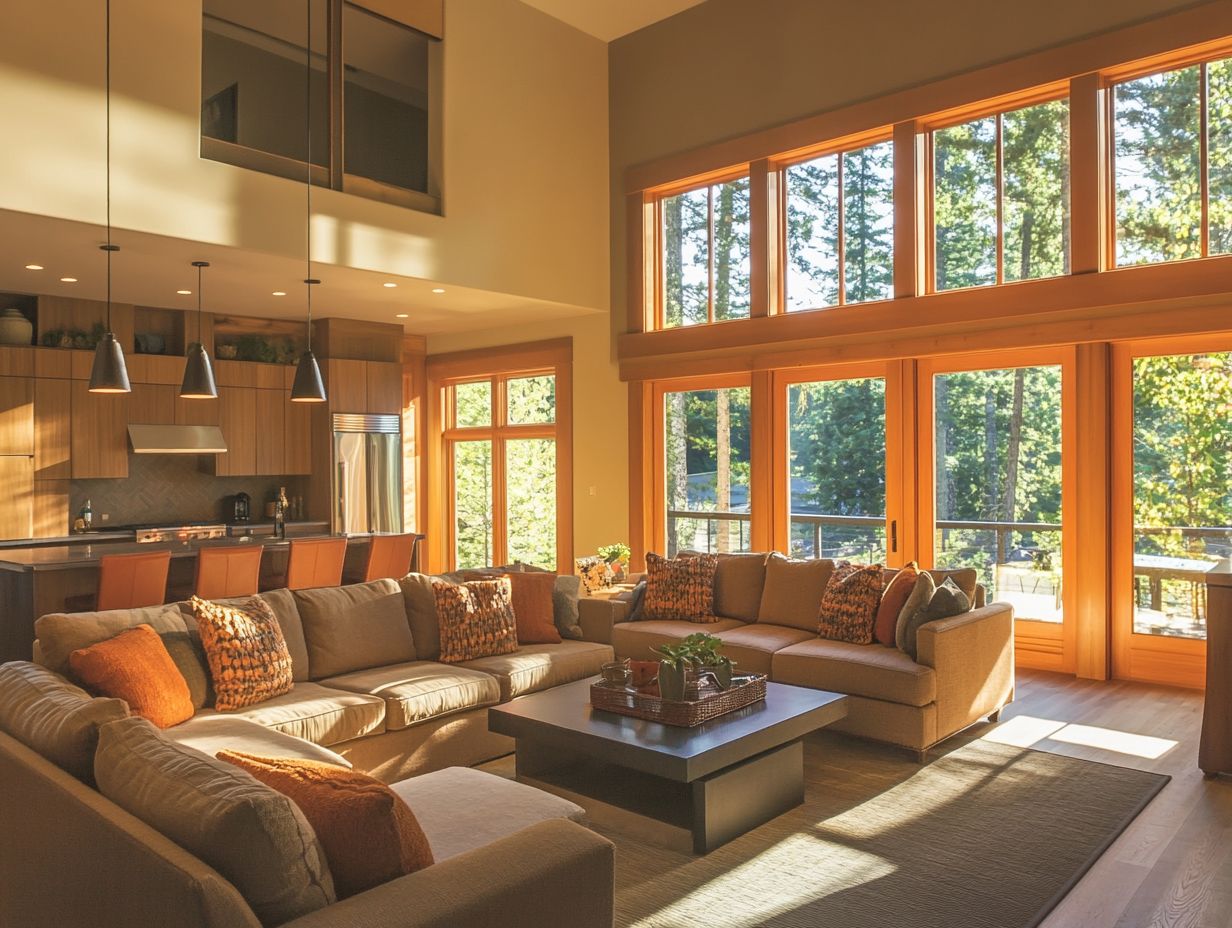
LED bulbs use about 75-80% less energy than traditional incandescent bulbs, making them a highly energy-efficient option for homes.
What are the benefits of using CFL bulbs in homes?
CFL bulbs are energy-efficient and have a longer lifespan compared to traditional incandescent bulbs. They also produce less heat, making them a safer option for homes.
Can halogen incandescent bulbs be considered energy-efficient?
While halogen incandescent bulbs are not as energy-efficient as LED or CFL bulbs, they are still more efficient than traditional incandescent bulbs and can provide a similar level of brightness.
Are linear fluorescent tubes suitable for all areas of the home?
Linear fluorescent tubes are best suited for large areas such as garages, basements, and workshops. They are not recommended for use in small rooms or areas where dimmable lighting is desired.
What should I consider when choosing energy-efficient lighting options for my home?
Ready to light up your home efficiently? Consider these key factors: brightness and color temperature, energy efficiency rating, lifespan, and suitability for the intended area of use.
Make the switch to energy-efficient lighting today! Your home and wallet will thank you.

